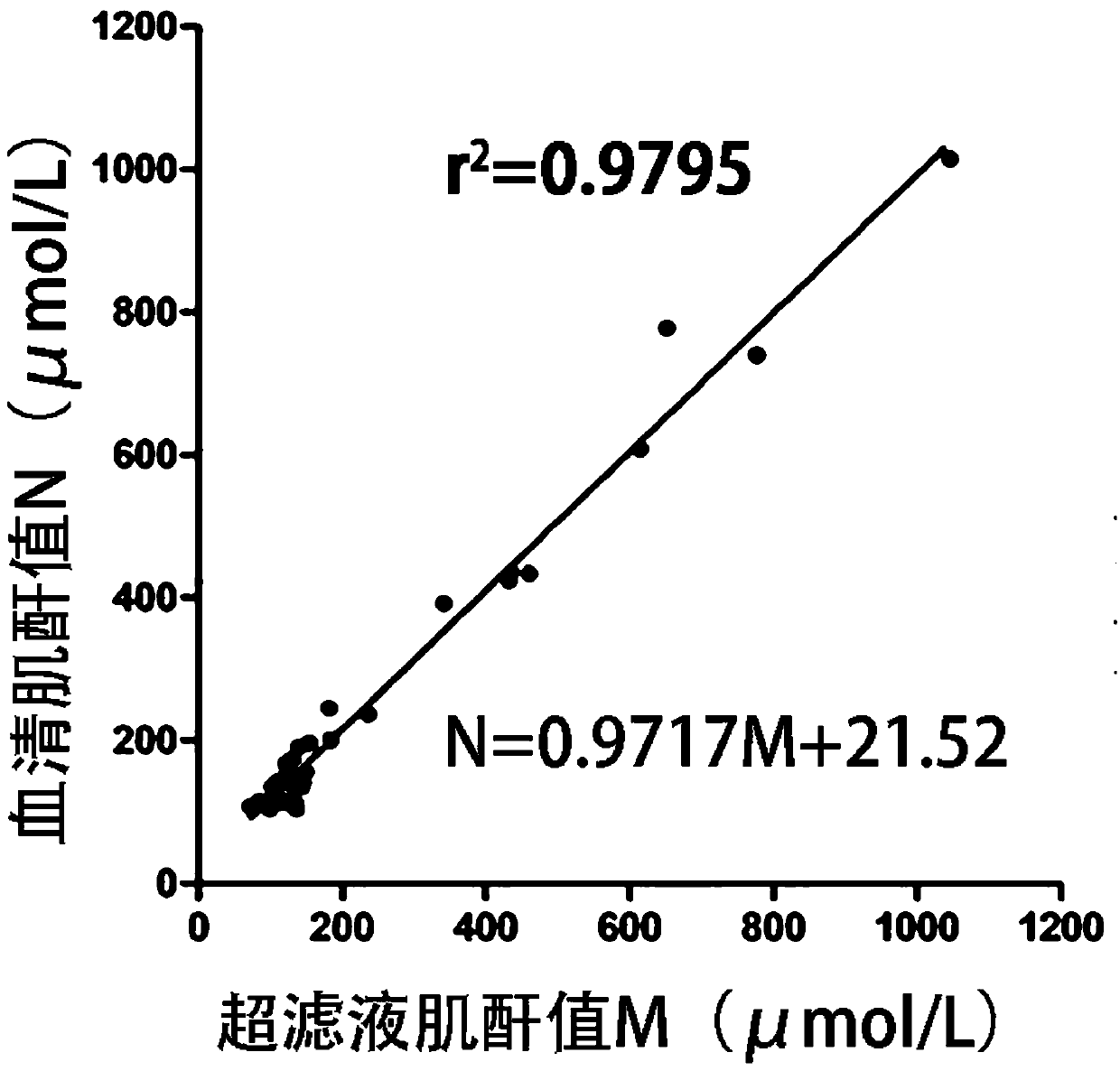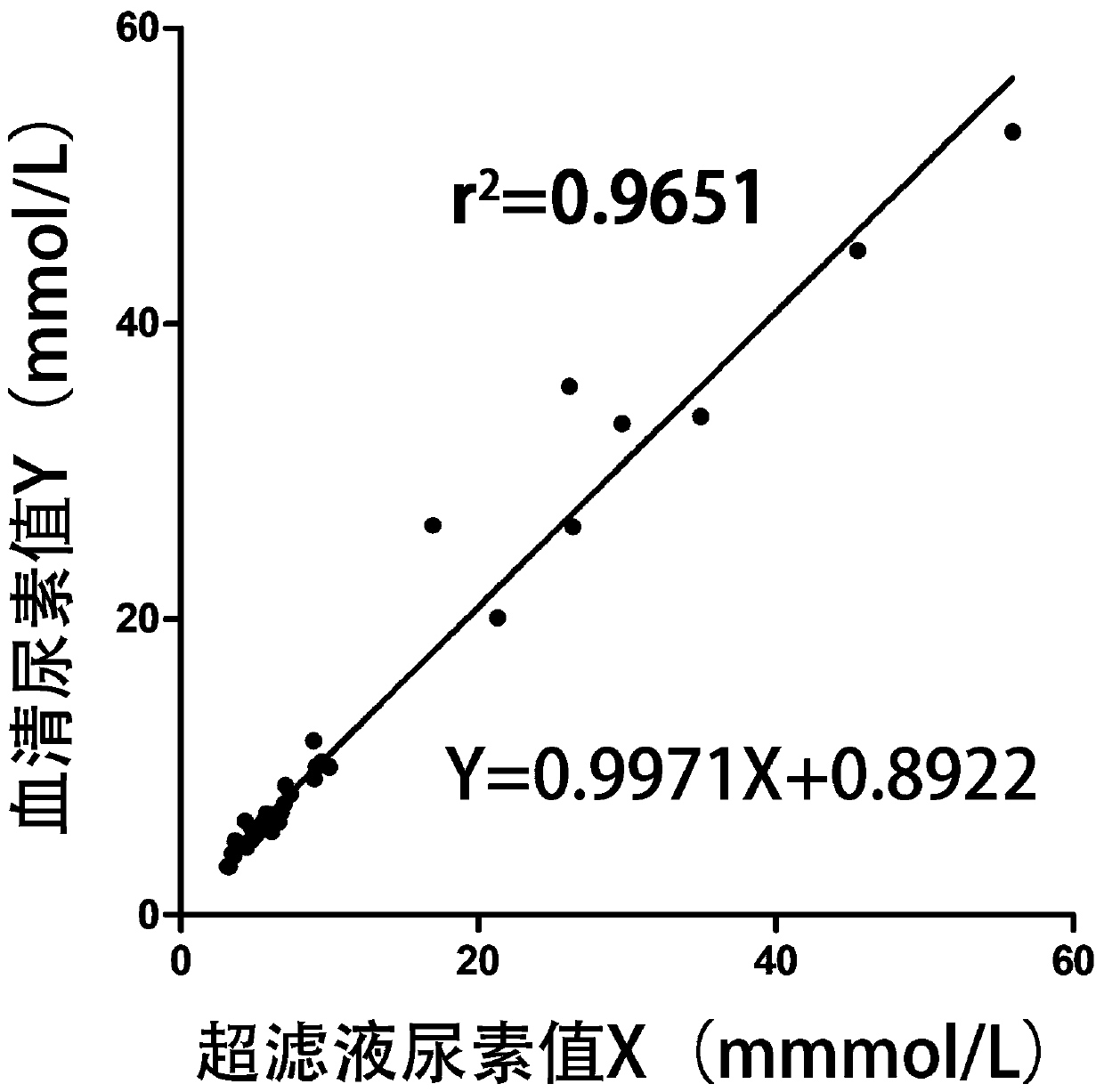Method for detecting urea and creatinine in forensic hemolytic blood sample
A technology in hemolyzed blood and samples, applied in the field of detection of urea and creatinine in forensic hemolyzed blood samples, can solve the problems such as the inability to obtain biochemical detection using blood samples, the inability to truly reflect the true concentrations of urea and creatinine, and the inability to perform detection, etc. To achieve the effect of reducing the detection error
- Summary
- Abstract
- Description
- Claims
- Application Information
AI Technical Summary
Problems solved by technology
Method used
Image
Examples
Embodiment Construction
[0034] like Figure 1-3 As shown, the ultrafiltration method uses a hollow fiber ultrafiltration module (MicroKros®, mPES, 50 000 D, 20 cm 2 , Spectrum Laboratories, USA) with disposable syringes and Amicon® Ultra-0.530KD vertical ultrafiltration components (Merck Millipore, USA) for ultrafiltration of hemolyzed samples, as detailed below.
[0035] 1. Assembly of the ultrafiltration device.
[0036] Assembly of the ultrafiltration device: the hollow fiber ultrafiltration module and 3 syringes as figure 1 Assembled as shown. Among them, No. 1 and No. 2 syringes are used as ultrafiltered blood samples, and No. 3 syringes are used as the first step of ultrafiltrate collection.
[0037] Second, the specific ultrafiltration process.
[0038] (1) Use the No. 1 syringe to draw 3 mL of the whole hemolyzed sample, repeatedly push the No. 1 and No. 2 syringes to perform the first ultrafiltration of the liquid in the ultrafiltration module, and use the No. 3 syringe to collect at lea...
PUM
 Login to View More
Login to View More Abstract
Description
Claims
Application Information
 Login to View More
Login to View More - R&D
- Intellectual Property
- Life Sciences
- Materials
- Tech Scout
- Unparalleled Data Quality
- Higher Quality Content
- 60% Fewer Hallucinations
Browse by: Latest US Patents, China's latest patents, Technical Efficacy Thesaurus, Application Domain, Technology Topic, Popular Technical Reports.
© 2025 PatSnap. All rights reserved.Legal|Privacy policy|Modern Slavery Act Transparency Statement|Sitemap|About US| Contact US: help@patsnap.com



